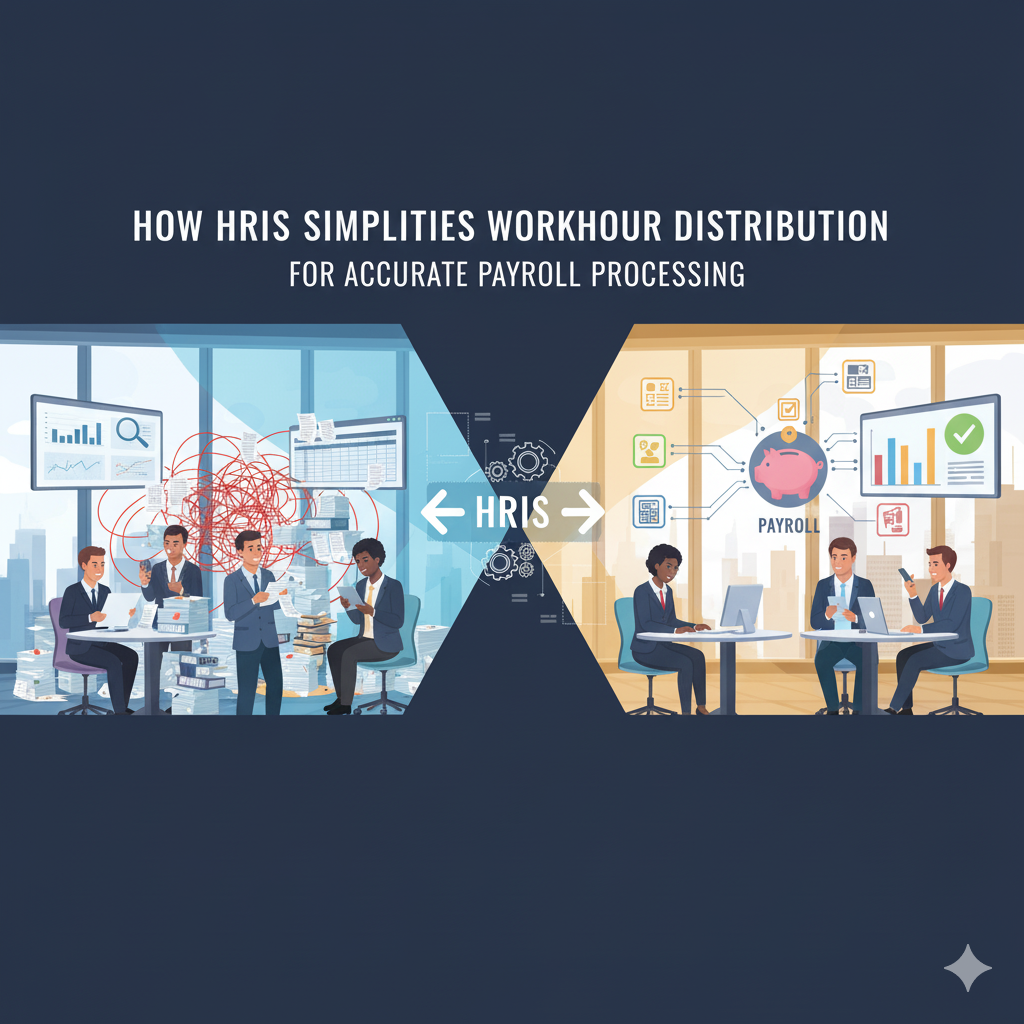Payroll accuracy is one of the most critical aspects of any organization’s HR operations. Even a minor mistake in recording workhours can result in incorrect pay, compliance issues, and employee dissatisfaction. Managing this process manually often leads to inconsistencies and time-consuming corrections.
That’s where the Human Resource Information System (HRIS) steps in — transforming how companies manage workhour distribution and payroll computation through automation and data integration.
What Is Workhour Distribution in Payroll Processing?
Workhour distribution refers to the process of allocating employees’ recorded hours — including regular time, overtime, breaks, and leaves — across specific pay periods or cost centers before payroll is computed.
In a manual system, HR staff typically collect timesheets, validate attendance, and input data into payroll spreadsheets. This manual handling increases the risk of human error.
By contrast, an HRIS system automates this entire workflow, ensuring that every hour logged is accurately reflected in payroll without redundant data entry.
The Role of HRIS in Automating Workhour Distribution
An HRIS is an integrated software platform that connects time tracking, attendance, and payroll systems. This connection allows for smooth and accurate workhour distribution. Here’s how:
- Real-Time Time Tracking
Employees record their workhours via biometric systems, mobile apps, or web portals. The HRIS collects this data instantly and assigns it to the appropriate pay period — reducing delays and data mismatches.
- Smart Data Validation
HRIS systems apply predefined business rules to validate entries. For example, if an employee exceeds overtime limits or misses a shift, the system flags it automatically. This ensures that payroll uses only verified and compliant data.
- Automatic Allocation to Payroll
Once the data is validated, the HRIS automatically feeds workhour information into the payroll module. Each hour is categorized (regular, overtime, night shift, etc.) according to company policies and labor laws.
- Integration Across Departments
For organizations with multiple cost centers or project-based billing, HRIS can distribute hours by department, project, or client. This ensures cost accuracy and simplifies financial reporting.
Benefits of Using HRIS for Workhour Distribution
- Elimination of Manual Errors
Automating time and attendance tracking removes the risk of manual input mistakes — ensuring payroll reflects true employee hours.
- Faster Payroll Processing
Automation shortens processing time from days to hours. HR teams can focus on analysis and employee support instead of repetitive data entry.
- Enhanced Transparency
Employees can view their own logged hours and payroll summaries through self-service portals, promoting trust and accountability.
- Improved Compliance
HRIS ensures compliance with labor regulations, overtime policies, and local tax laws by applying consistent validation rules and maintaining accurate audit trails.
- Data-Driven Insights
Through reporting dashboards, HR managers can analyze attendance patterns, overtime costs, and productivity trends — helping improve workforce planning.
Real-World Example: HRIS in Action
- Consider a mid-sized company with 300 employees managing payroll manually through spreadsheets. Before HRIS adoption, reconciling timesheets took 2–3 days per cycle.
- After implementing an integrated HRIS solution, the same task now takes just a few hours, with zero calculation errors and real-time reporting for management review.
This automation not only saved time but also boosted employee satisfaction due to timely and accurate payments.
Best Practices for HRIS-Based Payroll Processing
To maximize efficiency in workhour distribution:
- Standardize time-tracking policies across all departments.
- Regularly audit HRIS configurations to align with labor law updates.
- Train employees and supervisors to use self-service features correctly.
- Integrate HRIS with accounting systems for seamless cost allocation.
These best practices ensure that your HRIS continues to deliver consistent accuracy and operational savings.
Final Thoughts
Accurate payroll begins with accurate workhour distribution — and HRIS makes it easier than ever.
By automating time tracking, validation, and allocation, an HRIS system ensures payroll is accurate, efficient, and compliant every single time.
If your organization still relies on manual payroll processes, it’s time to explore how HRIS can transform your HR operations — starting with a free trial or system demo to experience the difference firsthand.




